Nab some outdoor seating while it’s still warm-ish
In the Before Times, that halcyon era when we didn’t have to worry about social distancing and hand sanitiser, one of the biggest bugbears with dining out in London was finding somewhere that was vegan-friendly, took reservations and had a high likelihood of not being stomach-churningly awful.
Getting all three in a single restaurant was – and is – a nigh unachievable hattrick. Vegan-friendly, bookable restaurants – especially ones that don’t ape meat in the well-meaning but ultimately infantile fashion currently in vogue – are seemingly about as common as competency in Westminster.
Koya City, the Square Mile outpost of the Soho original, is an unexpected exception to this rule. Located in the Bloomberg Arcade near Brigadiers, it still takes bookings even though it no longer advertises this fact. It also has a clutch of outdoor tables and takes down customer details for contact tracing purposes via a smartphone-friendly website. Given the importance of both ventilation and data in suppressing the spread of the novel coronavirus, that’s critical for eating out as safely as possible.
Unusually for a Japanese restaurant in the West, udon specialists Koya City have several vegan-friendly dishes – a vital prerequisite for my meat, egg and dairy-dodging dining companion the Flame Haired Squelchie. Koya City’s udon menu was once divided into four categories that were – arguably – unnecessarily complicated. Hot udon in hot broth, cold udon with hot broth, cold udon with cold sauce to pour over it and cold udon with cold sauce to dip in. However, the apocalyptic economics of delivering takeaway and operating a restaurant during a pandemic have led Koya City to simplify the menu down to just hot udon in hot broth and cold udon with cold sauce to pour over it.
This simplification may not have happened otherwise, but such enforced minimalism can be a good thing in nudging a restaurant to focus on what its key, unmissable dishes really are.
Based on my experiences, which won’t come as a shock to the restaurant’s longtime fans, Koya City’s flat-sided udon is leagues ahead of what passes for udon in many of London’s other Japanese restaurants. Thick with a consistent mouth-pleasing tuggy chewiness that nonetheless gives way easily.
Its toothsome charms were somewhat dulled by being served hot in hot broth though, where they tend to become a tad too soft and soggy – even when scoffed with a sense of urgency. I’d almost prefer cold udon served with hot broth to make a return to the simplified menu in the place of hot udon in hot broth.
Even so, you may still flounder when choosing what plant-only bowl of udon to order. Here’s my guide on what to choose, with the odd bone thrown in for carnivores and vegetarians.
Mushroom udon at Koya City (vegan)
A lackluster hot broth didn’t do the hot udon here any favours. This was surprising given the nutty umami of the walnut miso paste, dotting the broth and served separately on the side. Its moreish flavours were a fine accompaniment to both the somewhat brothlogged udon and the just-cooked mushrooms.
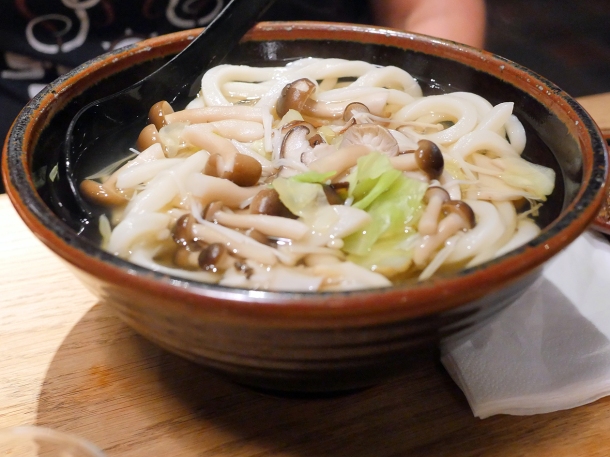
The hot broth accompanying cold udon, now discontinued, was a league apart from the broth that came with hot udon. Umami with a clean after taste, the former was bolstered not only by taut and slippery enoki and shiitake. It also received a boost from the walnut miso, which had an almost candied-like edge to its nuttily moreish profile this time around. I hope this superior set of mushroom noodles makes a speedy return.
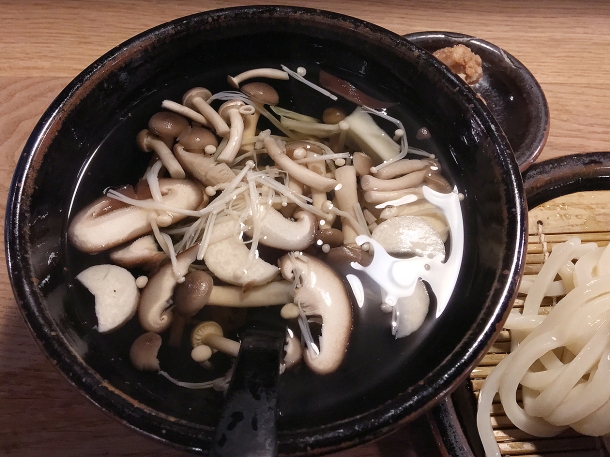
A cold sauce for pouring over cold udon packed a far more strident umami as well as a palpable tanginess. It more than made up for the diminished presence of the diced mushrooms, although these still had enough spring in their bite to justify their presence. The combination of cool, flavoursome sauce and toothsome noodles and mushrooms made for a mouthpleasing slurp and nibble.
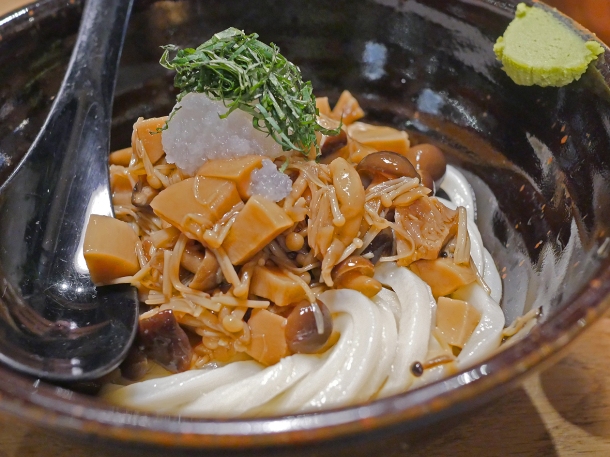
Tofu udon at Koya City (pescatarian due to the fish-based dashi)
The tofu Koya City has chosen to partner with its udon is far from the bland caricature of tofu that occupies the popular Western imagination. Malty, bready and sweet with a light chewiness that mirrors that of the udon itself, the tofu is almost reminiscent of grapes or even raisin loaf. When taken with hot udon in hot broth, the light umami and clean after taste of the latter was an apt companion and chaser for both noodles and bean curd alike.
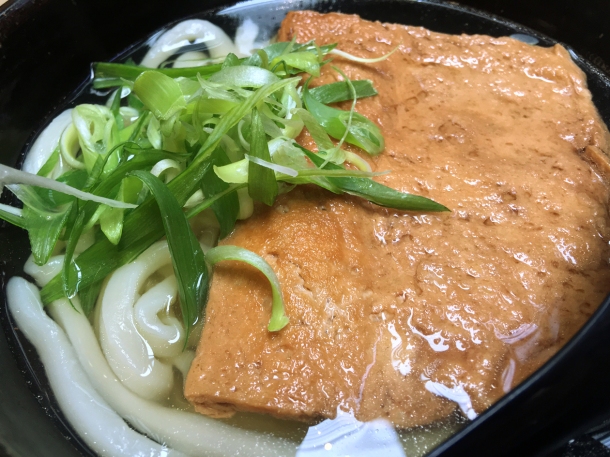
The tofu is arguably best taken with cold udon and cold sauce to pour over, though. Not because of the crisp spring onions which accompany both versions, and not just because of the cold udon’s superior mouthfeel over its hot counterpart. The reasonably nuanced wasabi that graces the cold version also plays a key role. It kicked off with a sweet creaminess before crescendoing into that familiar warmth that sets your nose hairs alight. It was a fine companion for tofu and udon, with the musky umami of the cool pour over dashi acting as a neat counterpoint to its ushanka-esque warmth.
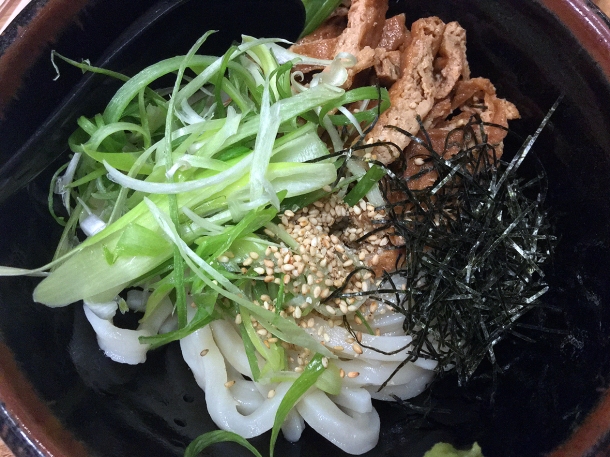
Seaweed udon at Koya City (vegan)
‘Seaweed’ doesn’t quite do justice to the range of kelp and sea greens Koya City layers on top of its udon. From sweet and musky to grassy, as well as earthy and umami, and then back again, they were all flavoursome – on their own and as a collective whole, especially when doused with the musky umami of the cold pour over dashi.
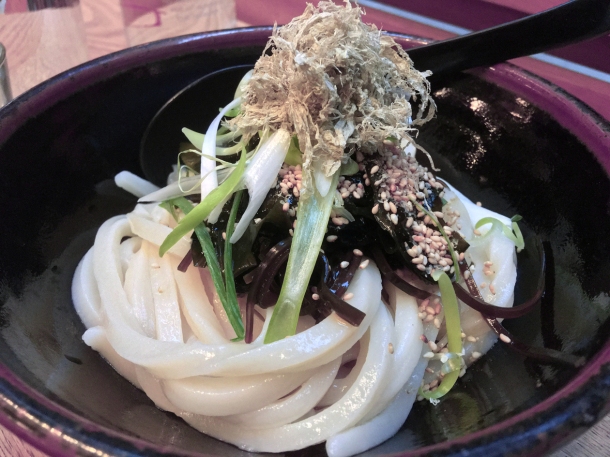
The multilayered heap of seaweed was complimented equally well by the measured moreishness of hot broth, neither overpowering nor ordinary but just right.
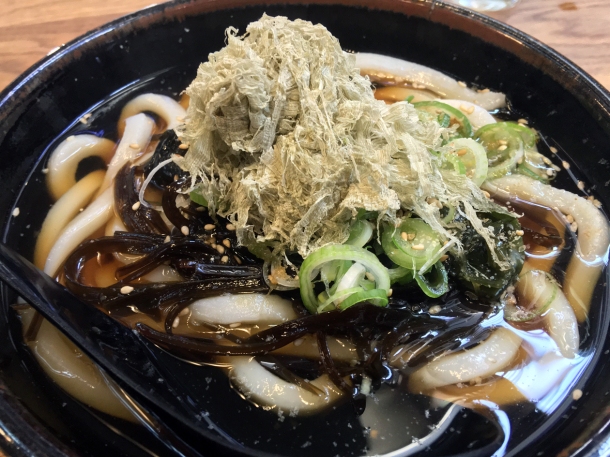
Vegetable tempura udon at Koya City (lacto-ovo vegetarian due to egg-based batter)
Koya City’s vegetable tempura seem to be somewhat seasonal, ranging from mushrooms in the chilly weeks just prior to lockdown to a mélange of sweet courgettes and aubergines as well as bell and shishito peppers during the last hazy days of summer. While not at the same level as some of the tempura available in Tokyo, the crisp and lightly crunchy batter was still heads and shoulders above the oily, stodgy excuse for tempura that you’d find elsewhere in London.
The tempura contrasted well with the tuggy chew of cold udon and the light umami of the cool pour over sauce. It worked almost as well with the cold udon and hot broth of the pre-lockdown menu, so much so that it hope it returns as the inevitably frigid British winter makes a cosy bowl of hot broth more appealing than a vase of the chilled stuff.
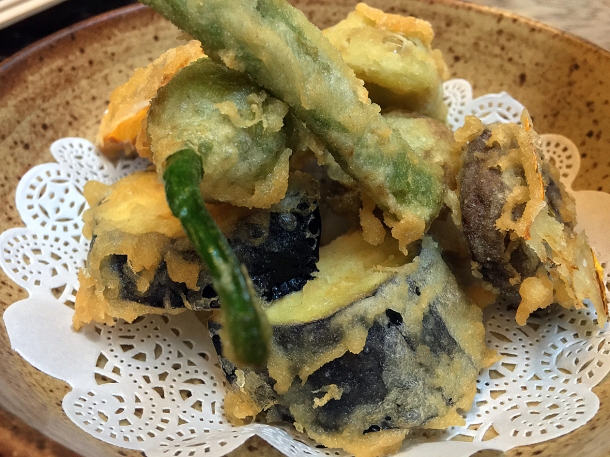
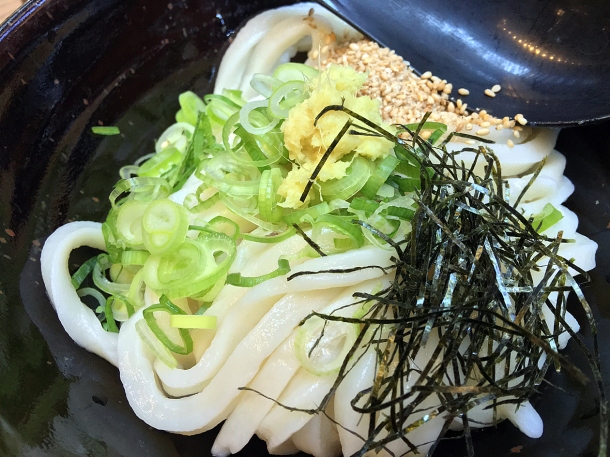
Lamb udon at Koya City
Given the near total absence of lamb in traditional Japanese cuisine, I was intrigued by Koya’s newest dishes which top udon with minced lamb. The results were, however, somewhat lackluster. The toasty temperature and obvious wetness of the broth in the hot version dampened whatever taste and texture the minced baby sheep once had. Given the broth-induced softness of the udon, the proffered togarashi garnish on the side was much needed – its citrusy tang and astringency was one of the few enjoyable things in this bowl.
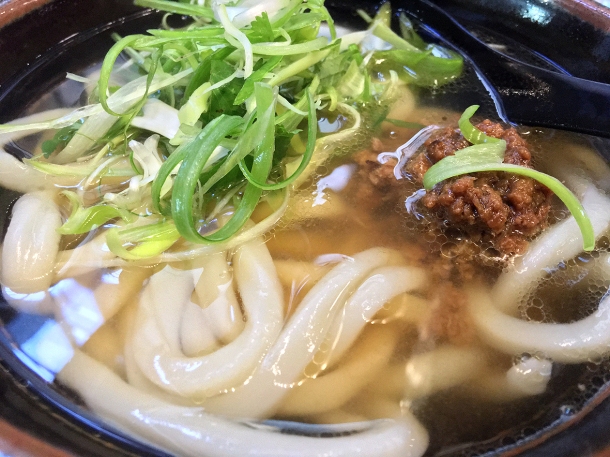
The transient firmness, fattiness and cumin-derived warmth of the lamb was somewhat more evident in the cold version of this dish, but only moderately so. The mouthfeel and flavour of some meats survive the transition to mincemeat well – lamb doesn’t appear to be one of them. At least the tug-worthy udon and elegantly moreish dashi were as on point as ever.
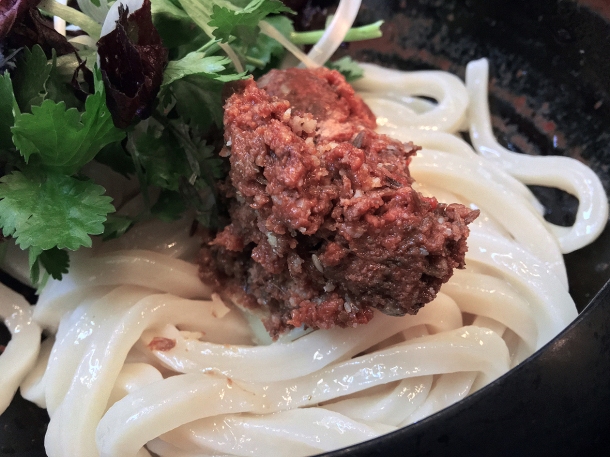
Side dishes at Koya City
The same tangy, sharp, moreish, lightly earthy and diced yet taut fungi that accompanied the cold udon with mushrooms is also available on its own as a side dish. The same also applies to the vegetable tempura. They’re well worth having if you’re otherwise going footloose and fungi-free.
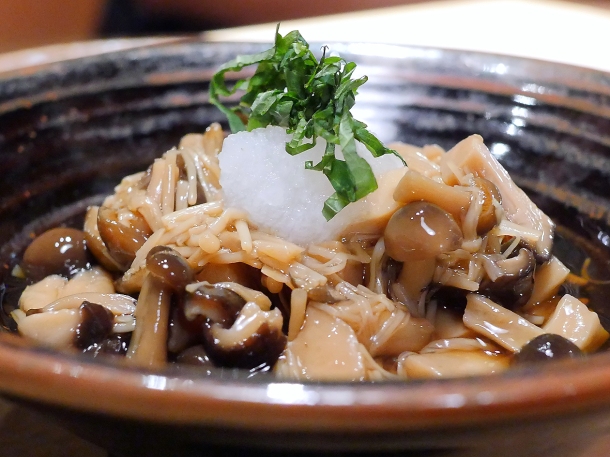
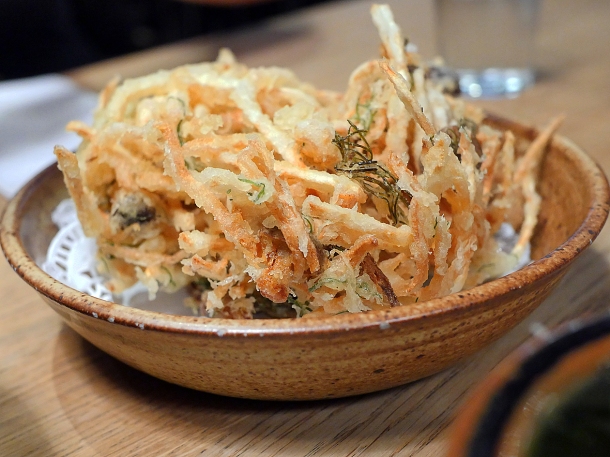
Simmered greens and chilled strips of bready tofu tofu lounged luxuriantly in a broth that was addictive in its sharp and tangy umami, bolstering both leaves and bean curd alike.
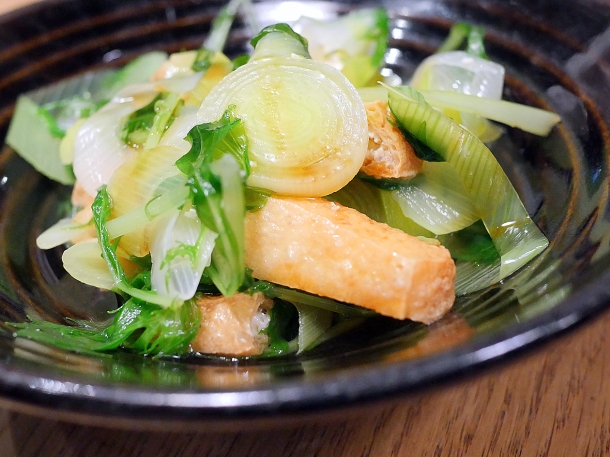
Agedashi tofu consistently suffered from soggy batter, although the level of soddeness varied from visit to visit. It wasn’t without its charms though, from the quiveringly soft tofu itself to the garnishes of minced ginger and spring onions, not to mention the lightly moreish dashi with a clear aftertaste.
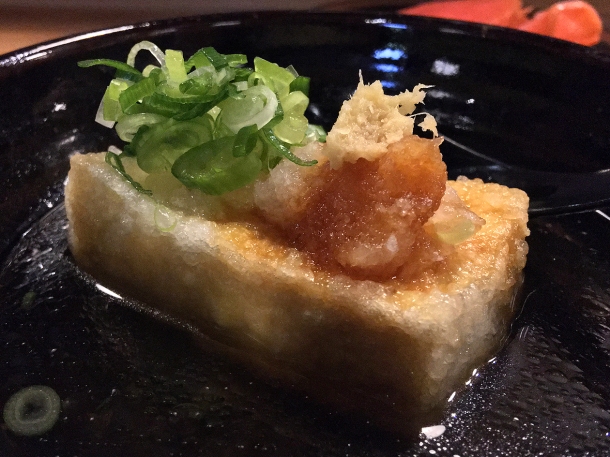
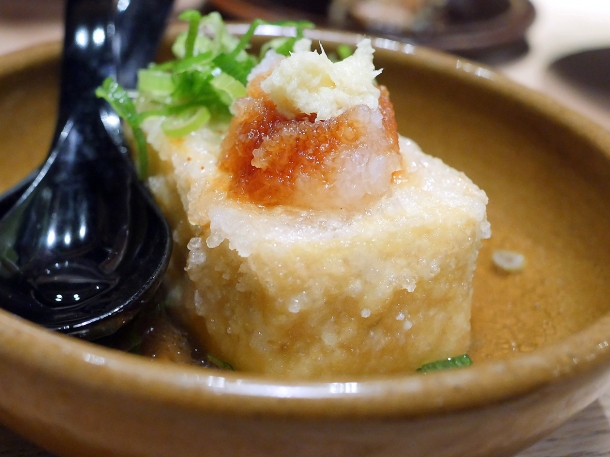
Umami sheafs of seaweed came in a puddle of tangy broth that was just as winsomely moreish. If you’d rather have your seaweed in soup form, the wakame soup had a miso-like moreishness along with a clean aftertaste.
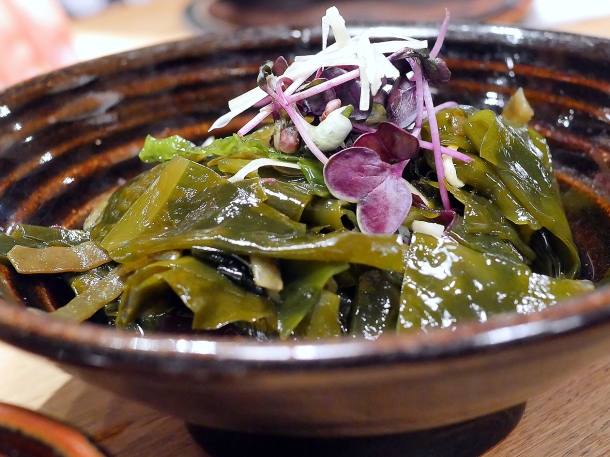
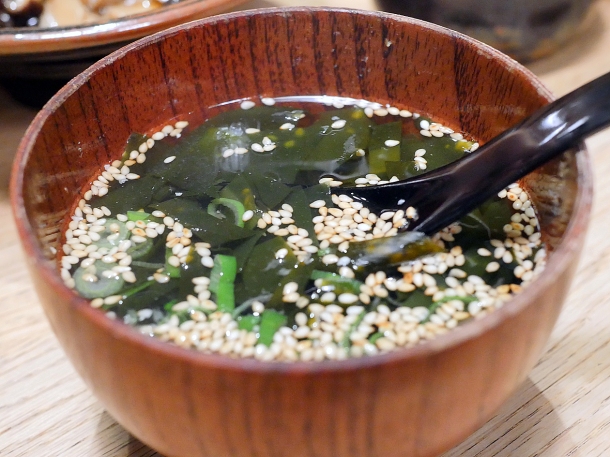
Miso soup had a restrained umami that was still ultimately satisfying.
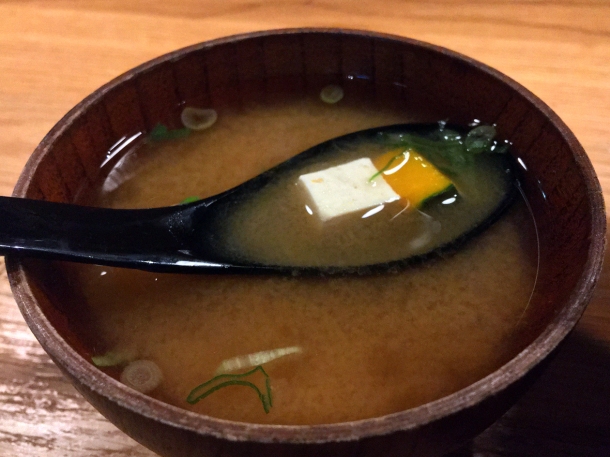
Sheafs of pickled daikon varied from visit to visit, either vinegary or sweet then lightly briney. Although they weren’t as deeply flavoured or as nuanced as some of the pickles I tried in Japan, they were sufficient as natty little palate cleansers.
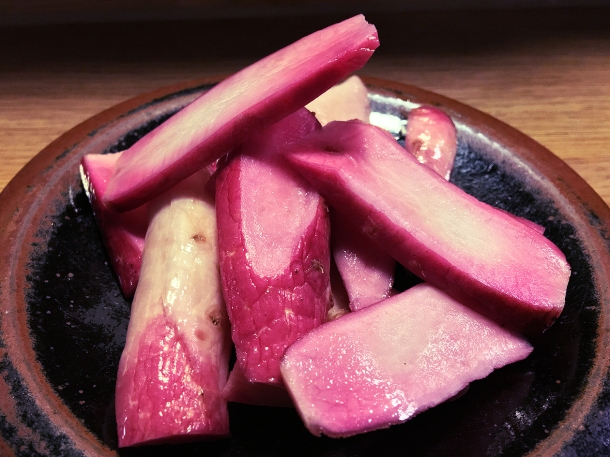
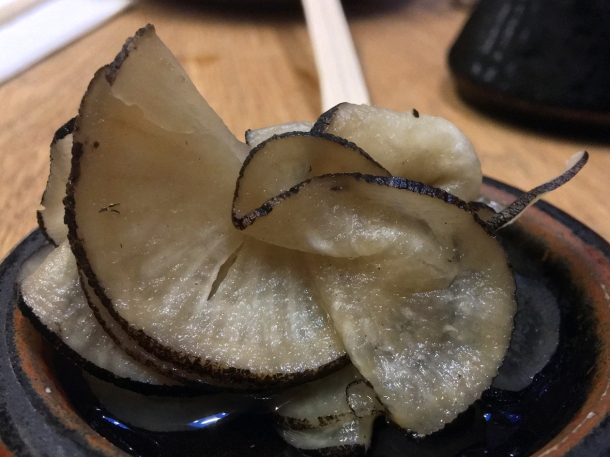
Pescatarians will want to order the crispy prawn heads. While most of the moreishness came from the hefty dusting of sesame salt rather than the heads themselves, they still packed a respectable level of moreishness all their own. Just as importantly, each crustacean noggin was consistently crisp, crinkling and cracking apart with just a purse of the lips and an assertive flick of the tongue.
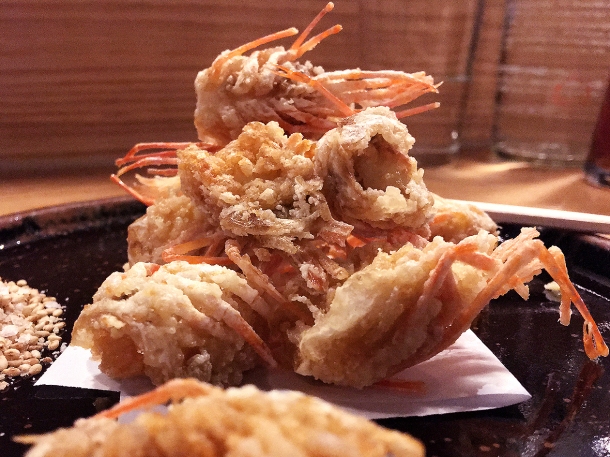
Other udon dishes and specials at Koya City
The lightly spiced and sweet soup of the vegan curry udon is clearly cut from the same chip shop cloth as most Japanese curries generally. It’s undemanding comfort food succor, made more so by a generous heap of vegetables cooked just-so – from sweet, sweated onions to crunchy pepper pieces. It’s just a shame that, as expected, the udon was rendered too soft by its soak in the hot soup.
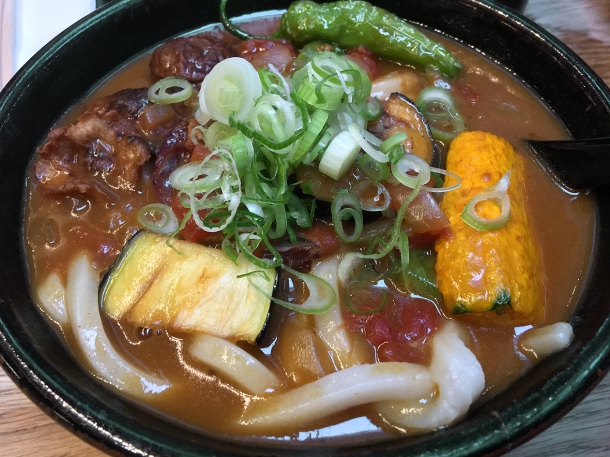
I usually favour sesame seed oil over other sesame-based condiments, but Koya City’s sesame sauce shows that such thick emulsions can work. It proved to be nuttily moreish with a light creaminess that never descended into clinginess or clagginess. Dipping or topping the toothsome cold udon with it made for an elegantly flavoursome pairing.
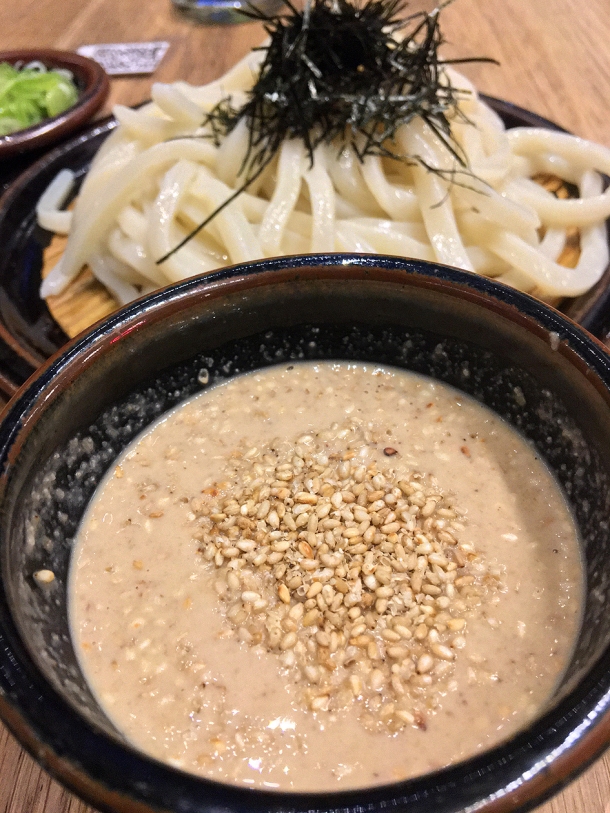
Few Japanese restaurants in London serve gyudon, so it was a surprise to find it at this udon specialist. Although there wasn’t any broth/sauce or enough of the sweet onions and ginger, the wafer thin slices of delicately soft beef had more than enough tangy charm on their own. Even so, it would’ve been only half as enjoyable without the heap of fluffy small-grained rice.
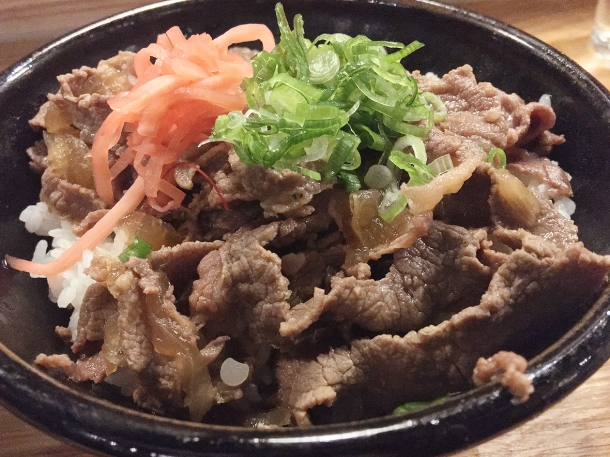
Tonkatsu worth the name is even harder to find in London than gyudon. Koya City’s version was never going to rank alongside the leading loins of Tokyo with its flawed batter. While consistently crisp and fine-grained, it was sometimes a tad too greasy and was never as feathery soft as its counterparts on the Home Islands. The pork underneath, though, was a sliced slab of porcine beauty. Consistently fatty and tender, the pork was everything that other versions elsewhere in this town are not. All it needs is a batter worthy of sheathing its corpulent shoulders.
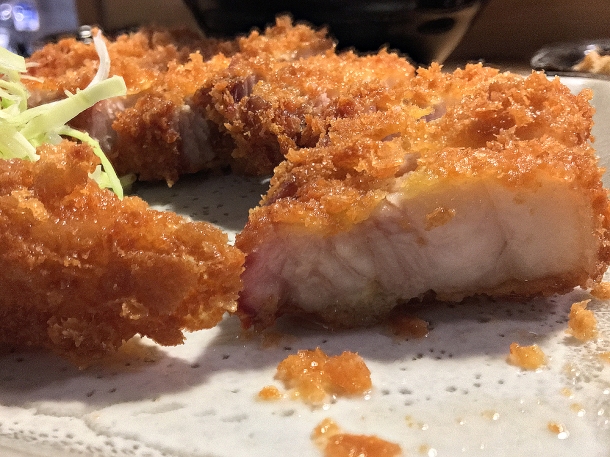
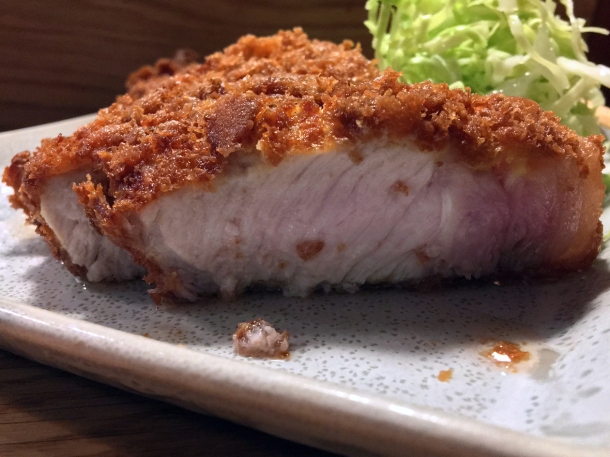
Chicken karaage didn’t have the airy, bubbly, malty batter of the very best versions of this dish. But there was still joy to be found in its smooth, soft and seamlessly supple batter and the moist, springy chook underneath.
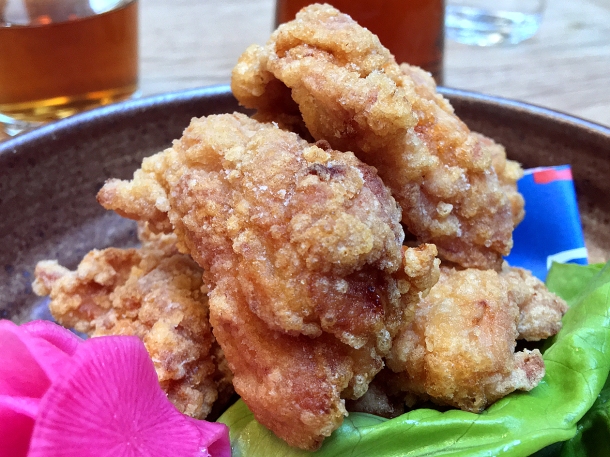
It’s worth delving into Koya City’s specials board if you can, as the intermittent special guest dishes can be unexpectedly rewarding. Thin yet meaty and gently chewy slices of plaice sashimi would only have been half as enjoyable without the musky earthiness of the darkly purple berries glistening with shiso oil.
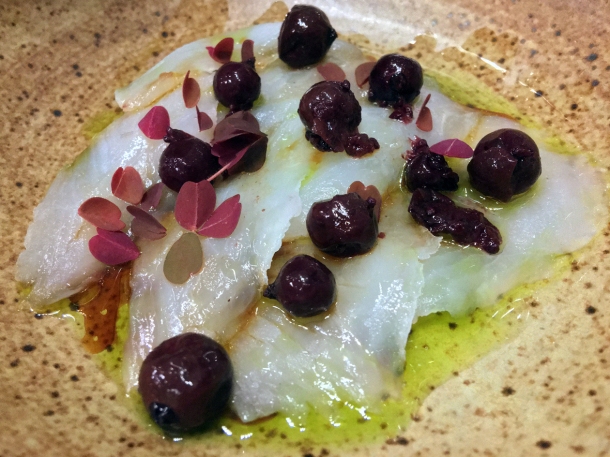
Hunks of ox cheek were tender enough to pry apart with chopsticks. Their sinewy, gelationus musculatures had taste to go along with that tongue tickling texture. The warm, stickily rich sauce had a bittersweet umami that helped bind the neatly rendered ox cheek with the baby carrots and potatoes which were almost as yielding. The star vegetable here had to be the mushrooms though. Their woody earthiness was so potent and winsome, I wished there had been more of these little beauties instead of the other vegetables. The combination of cheek and sauce had the potential to be overwhelming, but a heap of small-grained white rice and tart, briney pickles both acted as satisfactory palate cleansers.
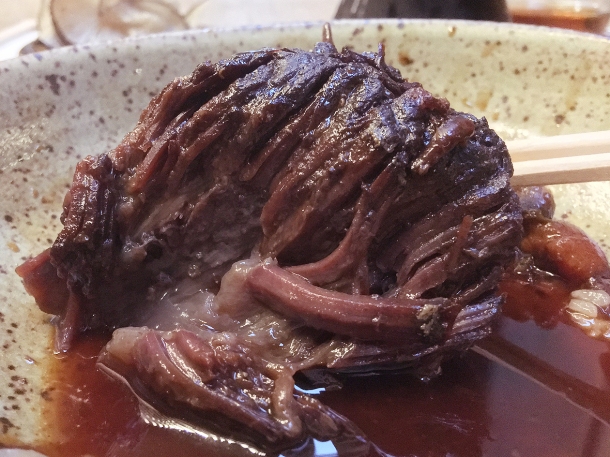
The ‘Forgotten’ aubergine special lingered in my memory long after it had passed through my grasping lips. The richly candied-like sweetness of the chilled yet fleshy aubergine, served in a moreish broth, was as satisfying as it was unexpected.
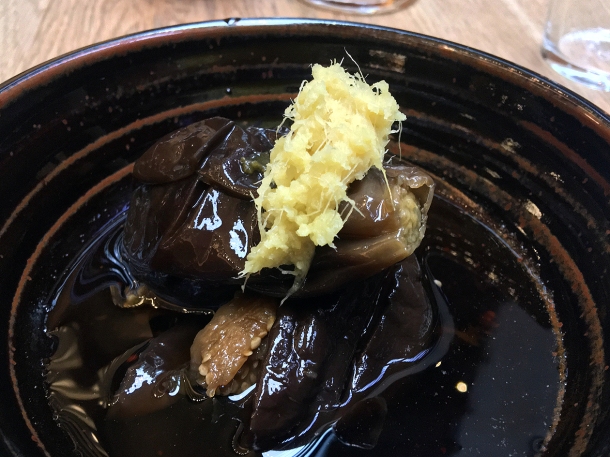
Wrinkled shishito peppers, charred under the grill, looked unassuming but were far more satisfying than any plate of the visually similar padron peppers that I’ve had in this town. Fleshy with a citrusy tang and an occasional burst of mildly spicy heat, they were titillating and enticing in a way that so many countless other starters elsewhere are not.
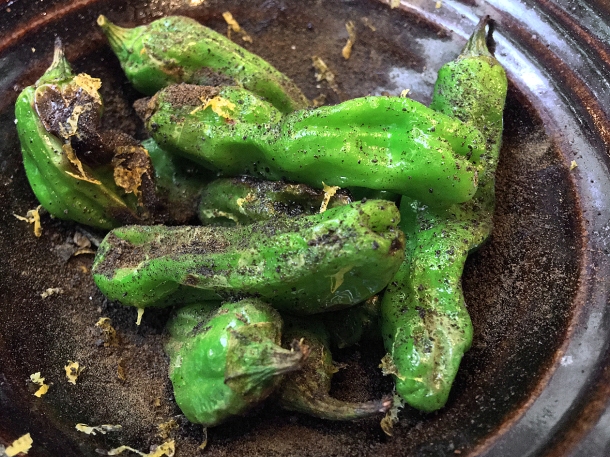
In a similar vein to the tonkatsu, while Koya City’s tempura specials never reached the heady heights set by Tokyo’s triumphant tempura, there was still some gut-pleasing bites to be had. On one plate, the oil-free and reasonably crisp batter shivved apart to reveal fleshy, sugary sweet figs beckoning for your embrace with their ruddy-hued allure. On the other plate was mullet, the fish emerging from its battered sheath as glistening meaty flakes cooked just-so.
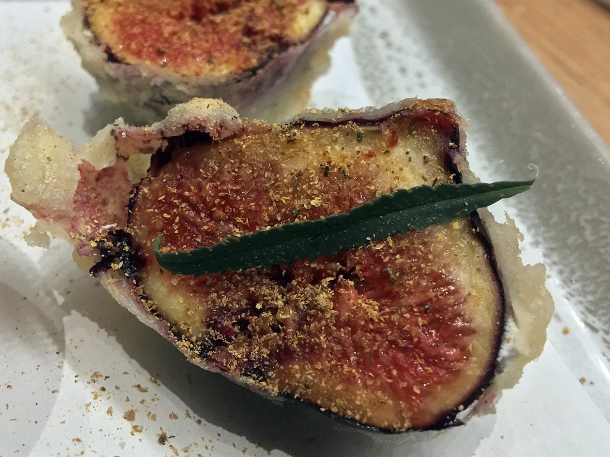
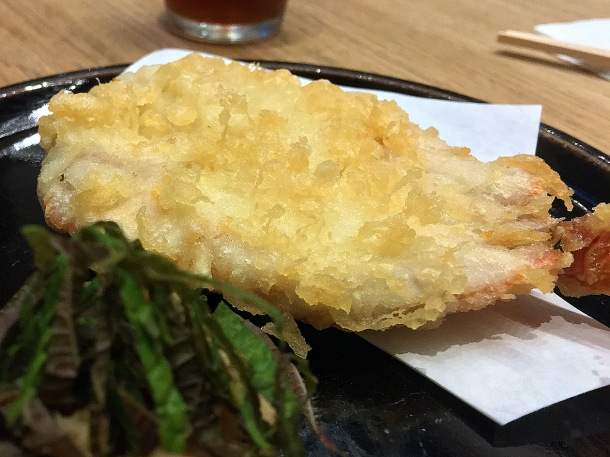
Sinewy medallions of grilled ox tongue came topped with grilled cuboids of peach, their gentle sweetness and acidity neatly cutting through the relative richness and heft of the tongue.
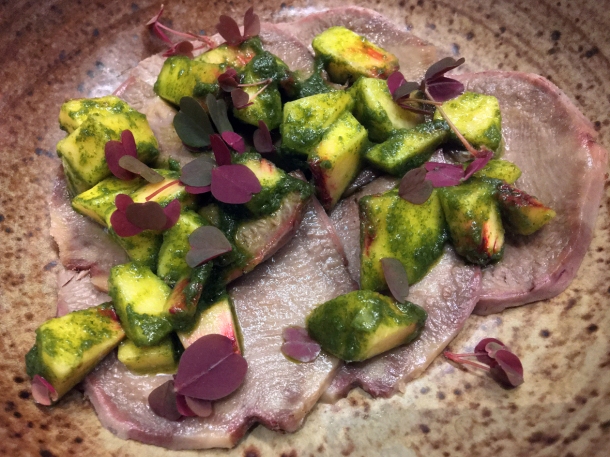
Desserts at Koya City
Koya City’s range of desserts changes relatively frequently, but almost always revolves around some form of ice cream. The quality of that ice cream can be disappointingly variable though, which may explain their temporary absence from the current, abbreviated menu.
Rice ice cream was a tad too crunchy with large ice crystals. Just as pressingly, it had an odd flavour that I couldn’t quite place and wasn’t quite rice-like. Not even the moonlighting rice krispies scattered on top could revive this lackluster dessert.
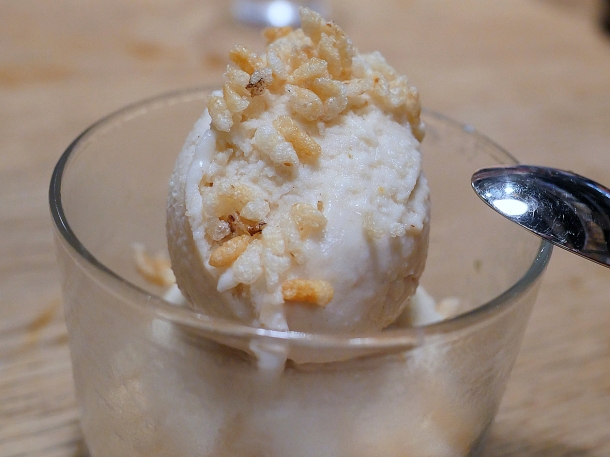
Milk ice cream was far smoother with a mild lactic undercurrent and a clean aftertaste. Elderflower honey blossom added a dual-layered sweetness – floral in one mouthful, more herby and bright in another. The chewy blossom itself was the proverbial cherry on top.
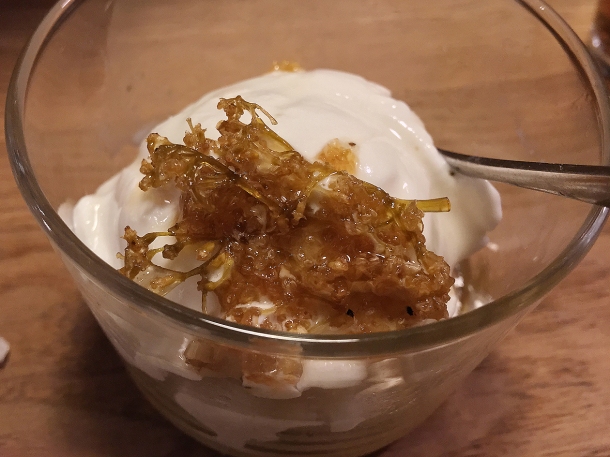
The milk ice cream’s form didn’t quite hold though – while almost as good on a subsequent visit, it suffered from a tad too much crunchiness the second time around. Still, it had enough smoothness, lightness and refreshment to contrast sharply with the umami-tang combo of the viscous salted caramel miso. Each half of this dessert, ice cream and caramel, neatly bolstered and counterbalanced the other.

The iced barley tea, which is still available, deserves a special mention for its consistently crisp, cool refreshment and malty character.
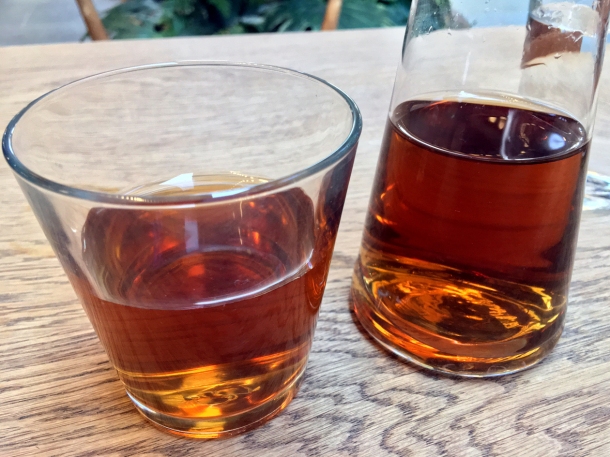
The Verdict
The restrained stoicism and almost minimalist elegance of the udon at Koya City may seem spartan compared to the more boisterous boldness of ramen, udon’s more widely replicated counterpart. But it’s this apparent, deceptive simplicity that lies not only at the heart of Koya City’s effectively delicious execution but also why its udon is so effortlessly adaptable to the needs of vegans and vegetarians. With no fussy, extraneous elements to hide behind, each bowl of udon succeeds – or not – on the sheer quality of its noodles, broth/sauce and toppings. The adaptability of this layering along with inspiration from the vegan/vegetarian-friendly cuisines of Japan’s monasteries (the most famed of which gives Koya its name) means it can ably please plant-eaters without resorting to flimsy flesh facsimiles and simulacrums.
Deliciousness borne from discipline and tradition, with an eye on the future. That’s a formula worth slurping and savouring, now more than ever.
What to order: Cold udon with mushrooms, tofu or seaweed; crispy prawn heads
What to avoid: Lamb udon
Name: Koya
Branch tried: 10-12 Bloomberg Arcade, London EC4N 8AR
Phone: none listed
Opening Hours: Monday-Saturday 11.30-22.30. Sunday 11.30-16.00.
Reservations? probably a good idea.
Average cost for one person including soft drinks and service charge: £15-20 approx. (£35 approx. if you push the boat out)
Rating: ★★★★☆